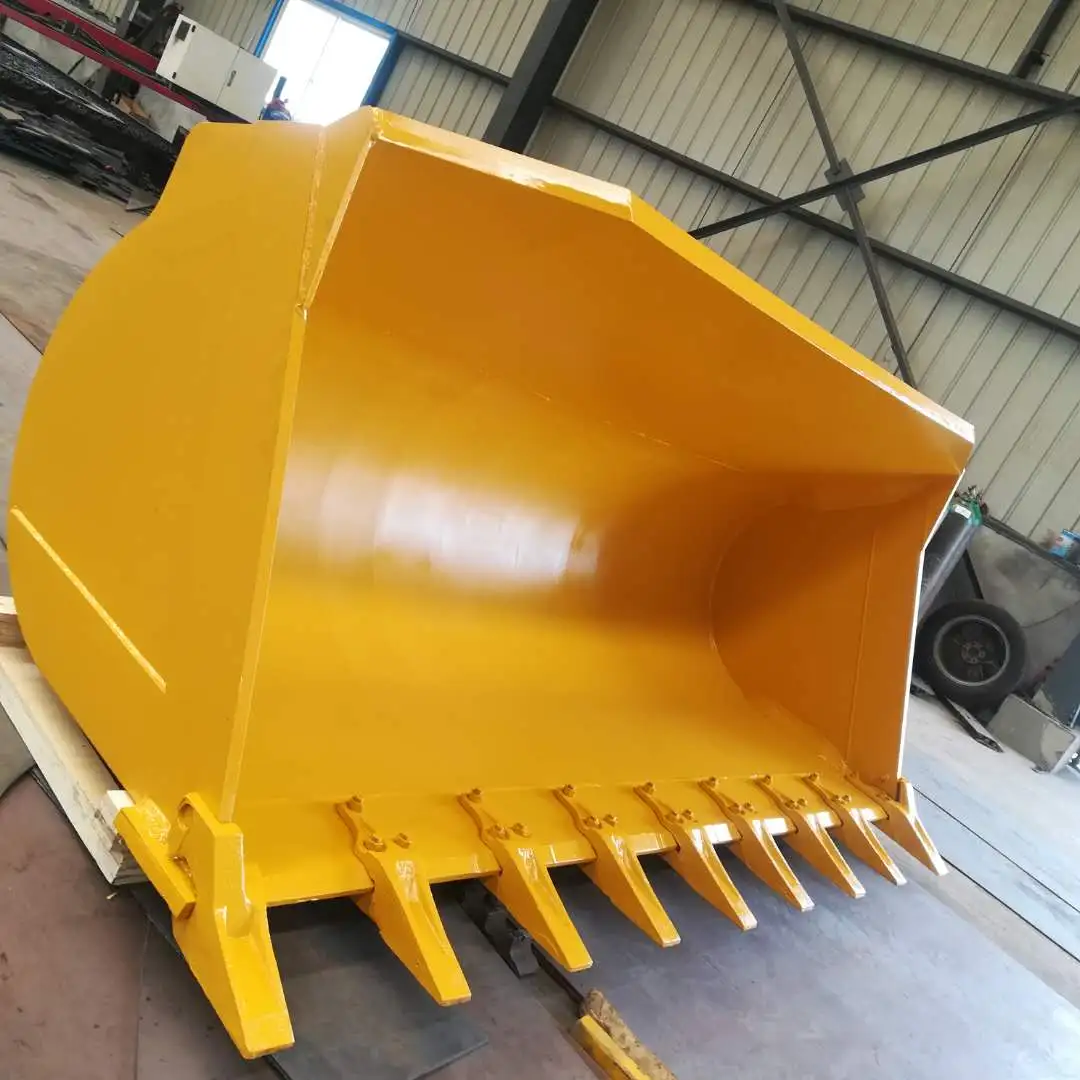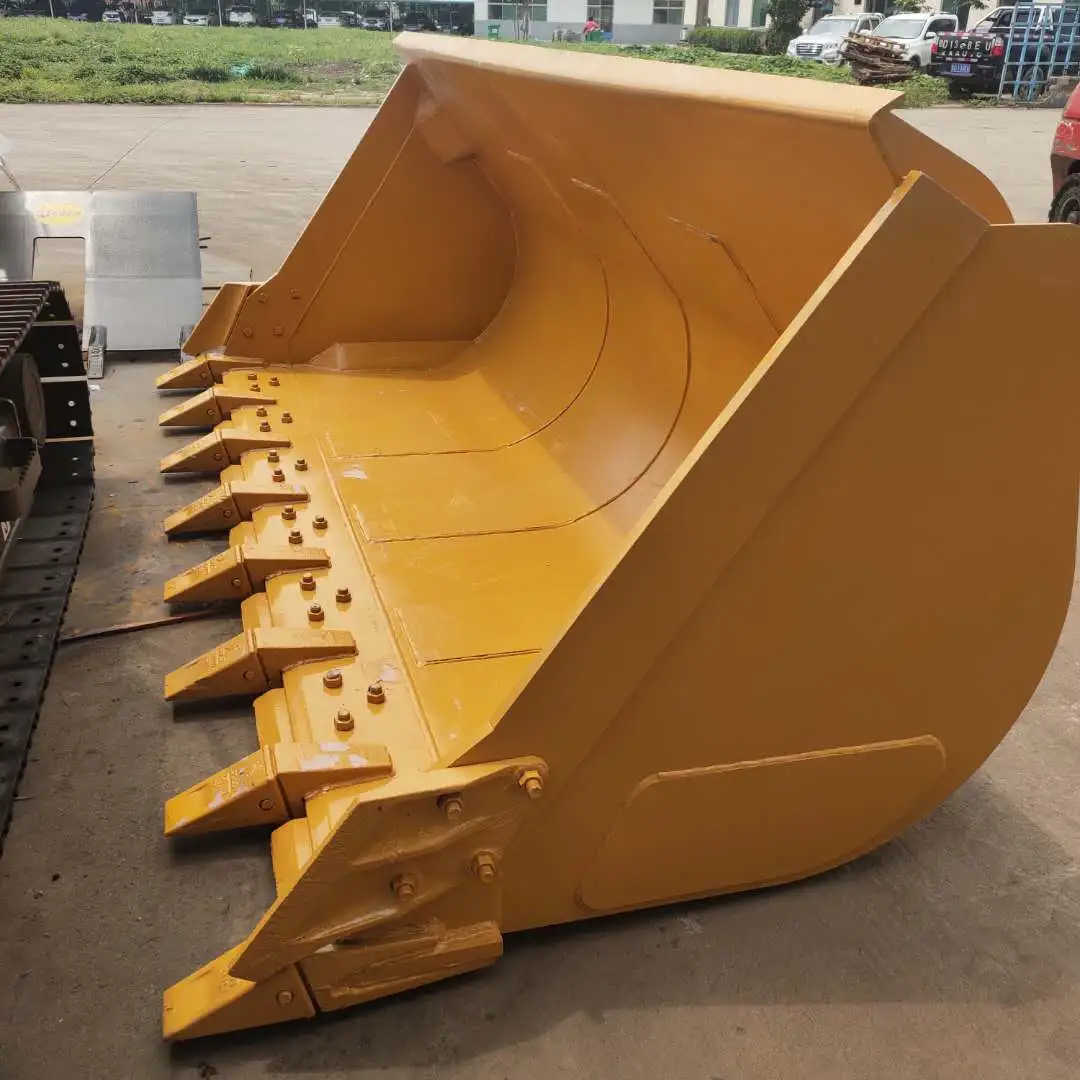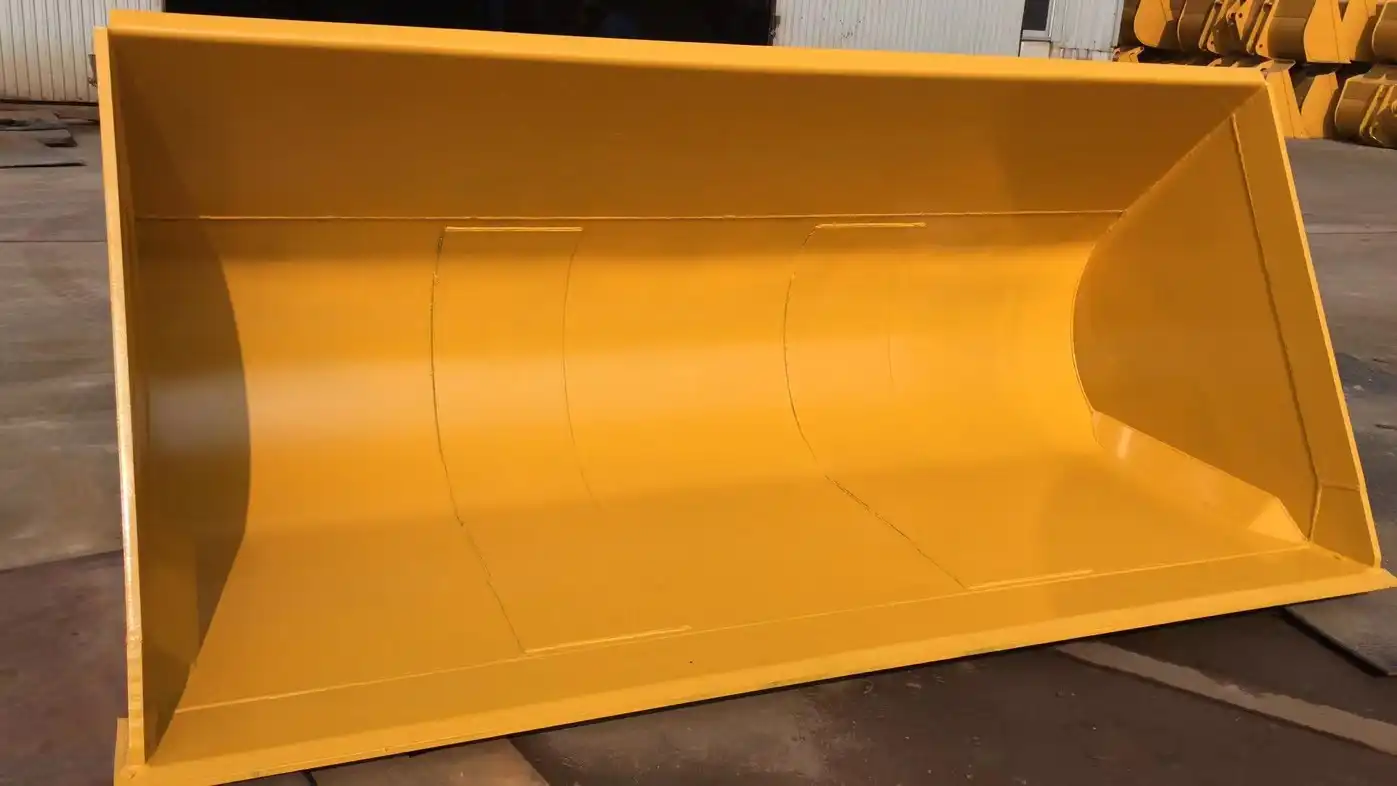What is the front bucket of a tractor called?
The front bucket of a tractor is commonly known as a front loader bucket or simply a loader bucket. This essential attachment transforms a regular tractor into a versatile material handling powerhouse. These buckets are designed to scoop, lift, and transport various materials, making them indispensable in industries ranging from agriculture to construction. These robust attachments come in different sizes and configurations, allowing operators to tackle diverse tasks with efficiency and precision.
Front-End Loader Bucket
Types of Front-End Loader Buckets for Tractors
Front-end loader buckets come in a variety of types, each tailored to specific applications. The most common is the general-purpose bucket, ideal for handling loose materials like soil, gravel, and sand. For heavier-duty tasks, there are rock buckets with reinforced edges and teeth for breaking through tough terrain. Light material buckets feature larger capacities for handling less dense materials such as wood chips or snow. Multipurpose buckets, also known as 4-in-1 buckets, offer versatility with a clamshell design that allows for grabbing, dozing, and grading.
Materials Used in Manufacturing Loader Buckets
The durability and performance of a front loader bucket largely depend on the materials used in its construction. High-strength steel is the primary material, offering an excellent balance of toughness and weight. Some manufacturers incorporate wear-resistant steel in high-impact areas to extend the bucket's lifespan. Cutting edges and teeth are often made from hardened steel alloys to withstand the abrasive nature of digging and scooping. In specialized applications, you might find buckets with polyethylene liners to prevent material sticking or corrosion-resistant coatings for handling aggressive chemicals.
Choosing the Right Bucket Size for Your Tractor
Selecting the appropriate bucket size is crucial for optimal performance and safety. Factors to consider include the tractor's hydraulic lift capacity, horsepower, and intended use. A bucket that's too large can overload the tractor, while one that's too small reduces efficiency. As a general rule, a bucket should be able to lift a full load without exceeding 35-40% of the tractor's tipping load. Width is another important consideration, typically matching or slightly exceeding the tractor's tire width for stability and maneuverability. It's always best to consult with equipment specialists or refer to the tractor manufacturer's recommendations when making this decision.

Design Links to Tractor Use
Attachment Systems: Quick-Connect vs. Pin-On
The method of attaching a front loader bucket to a tractor significantly impacts operational efficiency. Quick-connect systems have gained popularity due to their ease of use and time-saving benefits. These systems allow operators to switch between attachments in minutes without leaving the tractor cab, using hydraulic or mechanical locking mechanisms. On the other hand, pin-on attachments offer a more traditional and often more robust connection. While they take longer to change, pin-on systems can handle heavier loads and are less prone to wear over time. The choice between quick-connect and pin-on often depends on the frequency of attachment changes and the intensity of the work being performed.
Bucket Edge Design for Enhanced Digging Performance
The edge of a front loader bucket plays a crucial role in its digging efficiency and wear resistance. Straight edges are common for general-purpose buckets, providing a clean scraping action ideal for leveling and grading tasks. For more aggressive digging, serrated or toothed edges are preferred. These designs concentrate force into smaller contact points, allowing the bucket to penetrate harder materials more easily. Some buckets feature bolt-on cutting edges or teeth, which can be replaced when worn, extending the bucket's overall lifespan. The angle of the cutting edge, known as the attack angle, is also carefully designed to balance digging force with material retention.
Hydraulic Compatibility with Various Tractor Models
Ensuring hydraulic compatibility between the front loader bucket and the tractor is essential for optimal performance. This involves matching the bucket's hydraulic requirements with the tractor's hydraulic flow rate and pressure capabilities. Modern tractors often come equipped with load-sensing hydraulic systems that adjust flow and pressure based on demand, improving efficiency and reducing wear on components. When selecting a bucket, it's important to consider factors such as cycle times for lifting and dumping, as well as the ability to perform multiple hydraulic functions simultaneously. Some advanced bucket designs incorporate additional hydraulic functions, such as grapples or side-shift capabilities, which may require auxiliary hydraulic circuits on the tractor.

Function
Material Handling: From Soil to Gravel and Beyond
Front loader buckets excel in handling a wide range of materials, making them invaluable across various industries. In agriculture, they're used for moving feed, manure, and bulk materials around farms. Construction sites rely on these buckets for excavation, backfilling, and material transport. The mining sector utilizes them for handling ore and waste rock. Landscapers find front loader buckets indispensable for moving soil, mulch, and decorative stones. The versatility extends to handling snow in winter maintenance operations and managing waste in recycling facilities. The bucket's design, including its shape and capacity, can be optimized for specific materials to improve efficiency and reduce spillage.
Lifting Capacity: How Much Can Your Bucket Handle?
The lifting capacity of a front loader bucket is a critical factor in its performance and safety. This capacity is determined by several factors, including the tractor's hydraulic system, the loader's structural strength, and the bucket's design. Manufacturers typically specify two key measurements: the bucket capacity in cubic yards or meters, and the maximum lift weight at full height. It's crucial to understand that the actual lifting capacity can vary depending on the material being handled and the lift height. Operators must be aware of these limitations to prevent overloading, which can lead to tipping or equipment damage. Some advanced loader systems include load-sensing technology that helps prevent exceeding safe working loads.
Versatility: Beyond Digging - Grading and Leveling
While digging is a primary function, front loader buckets offer much more versatility. Grading and leveling capabilities make these attachments invaluable for site preparation and landscaping. By adjusting the bucket angle and using the tractor's forward motion, operators can achieve smooth, level surfaces. Some buckets feature a reversible cutting edge, allowing for both forward and backward grading. In construction, this versatility translates to reduced need for specialized equipment, saving time and resources. Advanced bucket designs may include laser-guided systems for precise grading, further enhancing accuracy and efficiency in tasks like road construction or sports field preparation.

Front loader buckets are essential attachments that significantly enhance the versatility and productivity of tractors across various industries. From their diverse types and materials to their design features and functional capabilities, these buckets play a crucial role in material handling, construction, and agricultural operations. By understanding the key aspects of front loader buckets, including their attachment systems, edge designs, and hydraulic compatibility, operators can make informed decisions to optimize their equipment's performance and efficiency.
FAQ
①How do I maintain my front loader bucket for optimal performance?
Regular maintenance includes inspecting for wear, tightening bolts, lubricating pivot points, and addressing any damage promptly. Clean the bucket after use and store it properly to prevent rust.
②Can I use a front loader bucket for snow removal?
Yes, front loader buckets are effective for snow removal, especially with a snow pusher attachment or a specialized snow bucket design for improved efficiency.
③What safety precautions should I take when operating a front loader bucket?
Always follow the manufacturer's guidelines, wear appropriate PPE, ensure proper weight distribution, avoid overloading, and be aware of your surroundings, especially overhead obstacles.
④How do I choose between a general-purpose bucket and a light material bucket?
Consider the density of materials you'll be handling most often. General-purpose buckets are better for heavier materials like soil, while light material buckets are ideal for less dense materials like wood chips or grain.
⑤Is it possible to upgrade my tractor's hydraulic system to accommodate a larger bucket?
In some cases, yes. Consult with your tractor manufacturer or a hydraulic specialist to determine if your tractor's hydraulic system can be upgraded to handle a larger bucket safely and effectively.
Front Loader Bucket Manufacturer
Tiannuo Machinery stands at the forefront, offering a comprehensive range of high-quality attachments for various industries. Our product line extends beyond buckets to include specialized equipment for railway maintenance, excavator modifications, and engineering arms. We pride ourselves on delivering innovative solutions such as rotating tilting buckets, ballast screening buckets, and customized digging buckets tailored to specific industry needs. Our commitment to quality, efficiency, and customer satisfaction is reflected in every product we offer. For expert advice on selecting the right front loader bucket or any other attachment for your specific requirements, contact us at arm@stnd-machinery.com. With Tiannuo Machinery, you're not just buying a product; you're investing in performance, durability, and cutting-edge technology.
References
- Smith, J. (2022). "The Complete Guide to Tractor Attachments." Agricultural Equipment Monthly, 45(3), 78-92.
- Johnson, R., & Brown, T. (2021). "Advancements in Front Loader Bucket Technology." Journal of Construction Engineering, 17(2), 205-220.
- Williams, E. (2023). "Material Handling Efficiency: A Comparative Study of Loader Bucket Designs." Industrial Equipment Review, 29(4), 112-128.
- Anderson, M. (2020). "Safety Considerations in Heavy Equipment Operations." Occupational Safety Quarterly, 33(1), 45-60.
- Lee, S., & Garcia, P. (2022). "Hydraulic Systems in Modern Tractors: Capabilities and Limitations." Agricultural Engineering Today, 18(3), 301-315.
- Thompson, K. (2021). "The Economic Impact of Versatile Tractor Attachments in Construction." Construction Economics Journal, 25(2), 178-193.
About Author: Arm
Arm is a leading expert in the field of specialized construction and railway maintenance equipment, working at Tiannuo Company.

